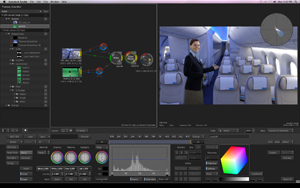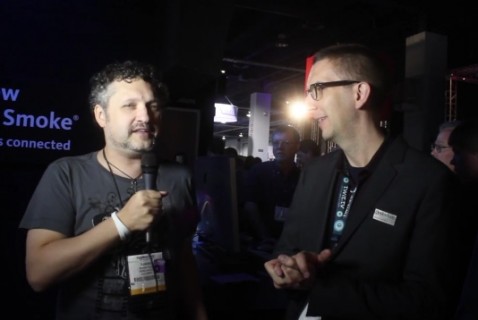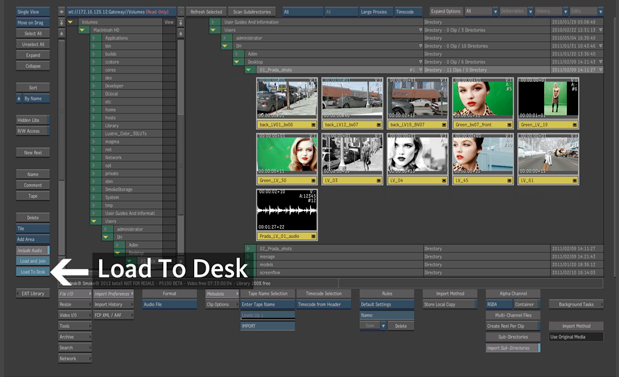When history looks back on our era for the innovators of visual branding and advertising, Süperfad would have to be at the very top of that list. In a world where many production companies draw their inspiration from the same source, the people of Süperfad find inspiration in a wide array of influences. As their website says, “Fine art, science, math, and literature are fused with illustration, photography, and technology to produce stunningly original imagery.”
Founded in 2001, Süperfad has established a lineage of award-winning work for brands such as Honda, Sony, Target, Adidas, AT&T and Cartoon Network. Geraint Owen is the Executive Producer of Superfad/NY and an establishing partner of the company. As Owen reveals, the tools to bring forth all of Süperfad’s raw inspiration and talent are crucial, and key among these is Autodesk’s Smoke.
PVC: With so many different products, how would you describe Süperfad?
GO: Süperfad first and foremost is a design and production company. We have always had editorial support, but in the last few years we have increasingly taken on spots in their entirety, from direction and production through offline edit and design all the way to online.
PVC: What needs were you trying to meet when you found Smoke?
GO: In terms of animation and compositing, Süperfad has always been firmly rooted in the world of After Effects. But as we worked more and more with complete edits and less with providing single shots and elements to other houses, we realized that building conforms and reassembling edits from within our After Effects workflow just wasn’t practical. We found that in online editing, importing lengthy DPX sequences, assembling the edit and reexporting individual shots proved to be too convoluted and time consuming. We also found ourselves frequently bumping into compositing and corrective issues on a per shot level that neither Final Cut Pro nor After Effects were equipped to handle.
We purchased Smoke to aid us in managing our online editing workflow as well as to strengthen our animation and compositing pipeline in such a way that it still supported our After Effects artists. Smoke can easily load and auto assemble our edits, which has been a boon for us, since prior to CS 5.5, After Effects did not recognize source timecode in DPX sequences, so each UNNAMED and UNIDENTIFIED image sequence would need to be painstakingly sorted through and eye matched to the shots in the rough edit. From there, each shot is then dust-busted, stabilized or dejitterred (removing camera wobble), and then exported to our server, where our animators can work on them.
PVC: Are you able to employ Smoke in any other areas of your post workflow?
GO: Smoke’s paint tool and stabilizer far surpass that of After Effects or any other NLE we have worked with. Removing specs, dust and grime from individual frames of a shot is very easy and can be done in under an hour, where in the past, this task has taken multiple AE artists days to do. Stabilizing and dejittering shots is also very easy in Smoke, and yields very good results. We rarely do any stabilizing or tracking in After Effects anymore.
PVC: Are their any attributes of Smoke that you just can’t find in other NLEs?
GO: Smoke’s color correction and keying modules are far superior to that of a traditional NLE, and its compositing and animation abilities simply can’t be found in Premiere or Final Cut Pro. Smoke represents the perfect balance of a heavy duty compositing platform with a non linear editor. Its tool set is structured around the edit timeline, making it very easy to work on composites and see them in context with the cut. Smoke’s real time playback also allows us to be able to make and review changes on the fly without needing to wait for long previews or caching, and its broadcast output makes it the perfect workstation around which to structure review sessions with clients and staff.
PVC: Can you talk about a project you’ve completed recently that you just wouldn’t have been able to pull off without Smoke?
GO: Earlier this year, we worked on a spot that was shot in Buenos Aires. Little did we know when the production team went down for the shoot that it was pollen season. Even though the spot was shot in a city environment, there were bits of pollen flying around in each shot. In some cases the wind was so heavy that the pollen was appearing as blurry streaks. The client asked if “There was something we could do about all that pollen,” a request that added a significant amount of work on top of an already composite heavy schedule.
Using Smoke, we were able to meticulously paint out each speck of pollen, as well as reduce the effect the wind was having on some scenes. It took days, and the work was monotonous, but our clients jaws hit the floor when they saw that we were able to accomplish a task that they themselves thought would be impossible. It would have been had we not had the Smoke at our disposal.
To find out more about Superfad, go to their website at: superfad.com
For more information about Smoke you can find them at http://www.autodesk.com/smoke
FTC Disclosure: The creation of this article was partially subsidized by Autodesk. Although they approved the general subject, they had no control over its editorial content.

Filmtools
Filmmakers go-to destination for pre-production, production & post production equipment!
Shop Now













